What is an AI Robot: Definition and Applications

#An AI robot is a combination of two important technological fields: robotics and artificial intelligence.
Simply put, an AI robot is a robot that, using artificial intelligence algorithms, is capable of performing various tasks intelligently and autonomously.
These robots can collect, analyze data, and make decisions based on it.
The applications of AI robots are very broad, covering various fields including industry, medicine, customer service, education, and more.
Artificial intelligence enables these robots to interact with their environment and operate independently.
For example, an AI robot in a factory can perform repetitive tasks with high precision and speed, while an AI robot in a hospital can assist doctors in diagnosing diseases and performing surgeries.
Robots, leveraging artificial intelligence, are capable of learning from their experiences and improving their performance.
AI robots can be deployed in dangerous or difficult conditions that are unsuitable for humans.
This feature makes them valuable tools in fields such as space exploration, search and rescue, and crisis management.
AI robots not only help improve efficiency and accuracy in performing tasks but can also reduce costs and create new opportunities for innovation and development.
With the accelerating progress of AI technology, it is expected that the role of AI robots in our lives will become more prominent and their applications will expand.
An AI robot is a transformative technology with high potential to bring positive changes in various societies.
Did you know a weak corporate website costs you many opportunities daily? Solve this problem forever with professional corporate website design by Rasawab!
✅ Create a powerful and trustworthy image for your brand
✅ Targeted attraction of new customers and increased sales
⚡ [Get free website design consultation]
Key Components of an AI Robot
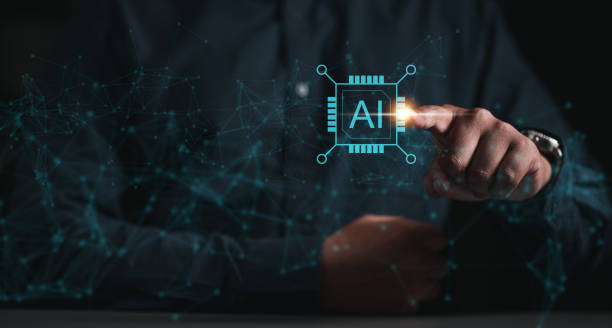
An AI robot consists of several main components, each playing a crucial role in its overall function.
These components include sensors, processors, actuators, and artificial intelligence algorithms.
Sensors enable the robot to collect information about its surroundings.
This information can include visual data (via cameras), audio data (via microphones), tactile data (via touch sensors), and motion data (via accelerometers and gyroscopes).
Processors are responsible for analyzing this data and making decisions based on it.
These processors are typically powerful computers that, using complex artificial intelligence algorithms, process data and send necessary commands to the actuators.
Actuators are responsible for performing physical operations.
They can include motors, pistons, and other devices that allow the robot to move, manipulate objects, and perform other tasks.
Artificial intelligence algorithms are the beating heart of an AI robot.
These algorithms enable the robot to learn, reason, and solve problems.
Machine learning algorithms allow the robot to learn from its experiences and improve its performance.
Reasoning algorithms enable the robot to make logical decisions based on its knowledge.
And problem-solving algorithms enable the robot to solve complex challenges.
Artificial intelligence plays a very important role in this.
An AI robot, using these components, can operate independently and intelligently.
An AI robot can effectively interact with its environment and perform various tasks with high precision and speed.
These components, in cooperation and coordination with each other, form an intelligent and efficient system.
An AI robot, as a powerful tool, has high potential to create positive changes in various industries.
Types of AI Robots Based on Application

AI robots are categorized into different types based on their applications.
These types include industrial robots, medical robots, service robots, military robots, and educational robots.
Industrial robots are used in factories and production lines to perform repetitive and dangerous tasks.
These robots can move parts, perform welding, paint, and carry out other manufacturing tasks with high precision and speed.
Medical robots are used in hospitals and treatment centers to assist doctors and nurses.
These robots can help with surgeries, rehabilitation, drug delivery, and other medical tasks.
AI robots in this field have led to increased accuracy and reduced medical errors.
Service robots are used in hotels, restaurants, shops, and other service locations to provide customer service.
These robots can take orders, serve food, provide information, and perform other service tasks.
Military robots are used in armies and armed forces to perform dangerous and difficult tasks.
These robots can assist in reconnaissance, bomb disposal, transportation, and other military duties.
Educational robots are used in schools and universities to assist students in learning.
These robots can teach lessons, review exercises, provide feedback, and perform other educational tasks.
AI robots in this area have helped improve the quality of education.
Given recent advancements in artificial intelligence, it is expected that the applications of AI robots will expand further in the future and play a more significant role in our lives.
With their capabilities and features, these robots can help improve the quality of life, increase productivity, and reduce costs.
AI robots can play an important role not only in various industries but also in daily life.
| Robot Type | Applications |
|---|---|
| Industrial Robot | Performing repetitive and dangerous tasks in factories |
| Medical Robot | Assisting doctors and nurses in hospitals |
| Service Robot | Providing services to customers in service locations |
| Military Robot | Performing dangerous tasks in armies |
| Educational Robot | Assisting pupils and students in learning |
Advantages of Using AI Robots

The use of AI robots offers numerous advantages.
These benefits include increased productivity, reduced costs, increased accuracy, improved quality, enhanced safety, and increased innovation.
AI robots can perform tasks with higher speed and accuracy than humans.
This leads to increased productivity and reduced task completion times.
Furthermore, AI robots can operate 24/7 without interruption.
This ensures that production and services continue continuously and without disruption.
By reducing human labor and increasing efficiency, AI robots can significantly reduce costs.
AI robots can perform tasks with higher accuracy than humans.
This leads to fewer errors and improved quality of products and services.
By performing tasks in a standard and uniform manner, AI robots can enhance the quality of products and services.
AI robots can perform dangerous tasks without endangering human lives.
This results in increased safety and reduced workplace accidents.
By handling repetitive and routine tasks, AI robots enable humans to engage in creative and innovative activities.
This leads to increased innovation and the development of new technologies.
An AI robot, as a powerful tool, has high potential to improve performance and efficiency across various industries.
By performing tasks intelligently and autonomously, these robots can contribute to increased competitiveness and sustainable development.
AI robots not only help improve efficiency and accuracy in performing tasks but can also reduce costs and create new opportunities for innovation and development.
Do you have an online store, but your sales aren’t as expected? Rasawab solves your problem forever with professional e-commerce website design!
✅ Significant increase in conversion rates and sales
✅ Unparalleled user experience for your customers
⚡ Click here for a free consultation with Rasawab!
Challenges in AI Robot Development
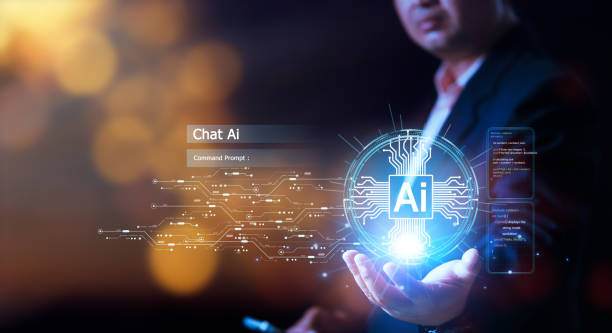
The development of AI robots faces numerous challenges.
These challenges include technical issues, ethical issues, legal issues, and social issues.
Among the technical issues are hardware limitations, algorithm complexity, the need for extensive data, and problems related to environmental interaction.
An AI robot requires powerful and advanced hardware to perform various tasks.
However, the development of such hardware is costly and faces technical limitations.
Artificial intelligence algorithms are highly complex and require a high level of expertise and knowledge.
Developing and optimizing these algorithms is a major challenge.
An AI robot requires a large amount of data to learn and improve its performance.
Collecting and preparing this data is a significant challenge.
An AI robot must be able to interact effectively with its environment.
This interaction includes object recognition, natural language understanding, and answering questions.
Ethical issues include concerns about privacy, discrimination, and accountability.
An AI robot can collect and process individuals’ personal information.
This raises concerns about privacy.
An AI robot may act discriminatorily in its decisions.
This can lead to inequality and injustice.
In case of an error or accident, who is responsible? This is a complex question that requires careful consideration.
An AI robot can have significant impacts on society.
These impacts can include job displacement, increased inequality, and changes in social values.
To address these challenges, collaboration among technical, ethical, legal, and social experts is needed.
Furthermore, there is a need to develop standards and regulations that govern the use of AI robots and prevent their misuse.
Despite its challenges, an AI robot has high potential to create positive changes in various societies.
With proper and responsible management, the benefits of this technology can be realized, and its risks mitigated.
The Future of AI Robots: Predictions and Possibilities

The future of AI robots is very bright and full of possibilities.
With the accelerating progress in artificial intelligence and robotics technology, it is expected that AI robots will play a much more significant role in our lives in the future.
It is predicted that AI robots will be widely used in various fields such as industry, medicine, services, education, transportation, and more.
In industry, AI robots can perform repetitive and dangerous tasks with high precision and speed.
This leads to increased productivity, reduced costs, and improved product quality.
In medicine, AI robots can assist doctors in diagnosing diseases, performing surgeries, and providing personalized treatments.
An AI robot in this field can help improve the accuracy and speed of disease diagnosis and treatment.
In services, AI robots can assist customers with various tasks such as booking tickets, ordering food, and obtaining information.
These robots can provide services 24/7 without interruption.
In education, AI robots can assist pupils and students in learning various subjects.
These robots can teach lessons, review exercises, and provide feedback.
In transportation, AI robots can autonomously drive cars, trains, and airplanes.
This can help reduce accidents, increase safety, and improve traffic flow.
In the future, an AI robot, as an intelligent partner, can assist humans in performing various tasks and make life easier and more enjoyable.
An AI robot, with its capabilities and features, can help improve the quality of life, increase productivity, and reduce costs.
With proper and responsible management, the benefits of this technology can be realized, and its risks mitigated.
An AI robot is a transformative technology with high potential to bring positive changes in various societies.
AI Robots in Manufacturing Industry
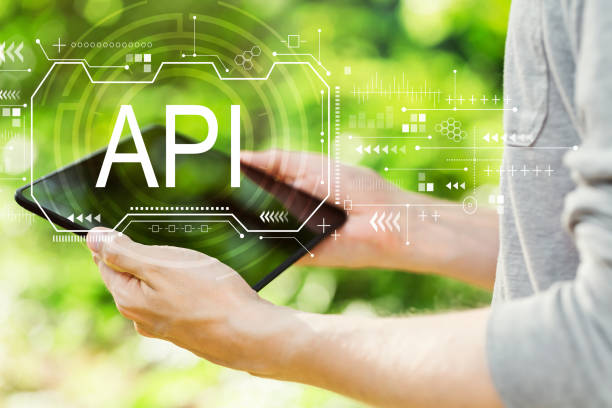
AI robots play a very important role in transforming the manufacturing industry.
These robots, utilizing AI capabilities, can perform various tasks on production lines autonomously and intelligently.
Among the applications of AI robots in manufacturing are: quality inspection, where AI robots can automatically and accurately inspect products and detect their defects and flaws.
This leads to improved product quality and reduced waste.
Parts assembly, where AI robots can assemble various parts with high precision and speed.
This leads to increased productivity and reduced production time.
An AI robot in this field can help improve accuracy and speed in performing tasks.
Material handling, where AI robots can transport raw materials and products on production lines.
This leads to reduced human labor and increased safety.
Welding and painting, where AI robots can perform welding and painting of parts with high precision and quality.
This leads to improved product quality and reduced costs.
Product packaging, where AI robots can automatically and quickly package products.
This leads to increased productivity and reduced packaging time.
AI robots in this field have helped improve accuracy and speed in performing tasks.
AI robots, utilizing machine learning capabilities, can learn from their experiences and improve their performance.
This leads to increased efficiency and reduced errors.
AI robots in this field have helped improve accuracy and speed in performing tasks.
An AI robot in the manufacturing industry, as a powerful tool, has high potential to improve performance and efficiency.
By performing tasks intelligently and autonomously, these robots can contribute to increased competitiveness and sustainable development.
AI robots not only help improve efficiency and accuracy in performing tasks but can also reduce costs and create new opportunities for innovation and development.
| Feature | Description |
|---|---|
| Quality Inspection | Detecting defects and flaws in products |
| Parts Assembly | Assembling parts with high precision and speed |
| Material Handling | Transporting raw materials and products |
| Welding and Painting | Welding and painting parts |
| Product Packaging | Automated product packaging |
AI Robots in Healthcare
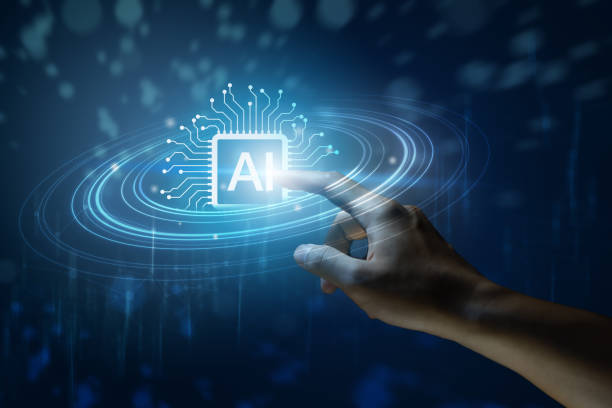
AI robots play a very important role in healthcare and are widely used in various fields such as disease diagnosis, surgical procedures, rehabilitation, and healthcare provision.
These robots, utilizing AI capabilities, can perform various tasks with high precision and speed, thereby contributing to the improvement of healthcare and treatment service quality.
Disease diagnosis: AI robots can diagnose diseases with high accuracy using medical data such as radiology images, laboratory results, and patient medical records.
This can help doctors diagnose diseases more quickly and accurately.
Performing surgeries: AI robots can assist surgeons in complex and delicate operations.
With their high precision and ability to perform delicate movements, these robots can help reduce surgical risks and improve surgical outcomes.
Rehabilitation: AI robots can assist patients in the rehabilitation process.
These robots can perform rehabilitation exercises automatically and under medical supervision, helping patients recover their abilities faster.
Healthcare provision: AI robots can assist patients in providing home healthcare.
These robots can monitor patients’ vital signs, remind them about medications, and notify doctors if needed.
AI robots in this field have helped improve the accuracy and speed of performing tasks.
An AI robot in the healthcare sector, as a powerful tool, has high potential to improve performance and efficiency.
By performing tasks intelligently and autonomously, these robots can contribute to increased competitiveness and sustainable development.
AI robots not only help improve efficiency and accuracy in performing tasks but can also reduce costs and create new opportunities for innovation and development.
Is your e-commerce website ready to attract maximum customers and increase sales? Rasawab transforms your online business with modern and efficient e-commerce website designs.
✅ Increased speed and improved SEO
✅ Excellent user experience on mobile and desktop⚡ Get a free e-commerce website design consultation from Rasawab!
AI Robots and Social Impacts
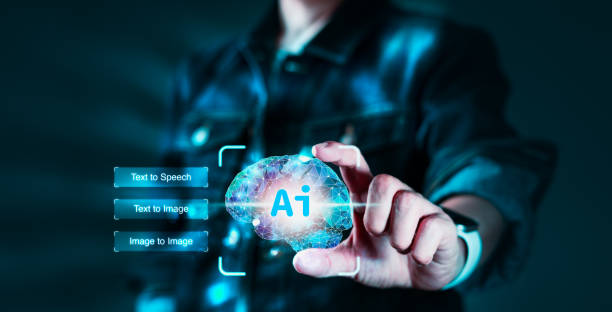
AI robots have profound impacts on various aspects of social life.
These impacts include changes in the job market, changes in social relationships, changes in education and learning, and changes in ethics and values.
Changes in the job market: AI robots can automate many jobs currently performed by humans.
This can lead to job displacement and increased unemployment.
However, AI robots can also create new jobs that require new skills.
Changes in social relationships: AI robots can interact with humans and create new social relationships.
These relationships can include friendship, cooperation, and even love.
Changes in education and learning: AI robots can assist pupils and students in learning various subjects.
These robots can teach lessons, review exercises, and provide feedback.
AI robots in this field have helped improve the accuracy and speed of performing tasks.
Changes in ethics and values: AI robots can raise new ethical and value-based questions.
For example, if an AI robot causes an accident, who is responsible? Should AI robots have rights? An AI robot, with its capabilities and features, can help improve the quality of life, increase productivity, and reduce costs.
An AI robot in the social sphere, as a powerful tool, has high potential to improve performance and efficiency.
By performing tasks intelligently and autonomously, these robots can contribute to increased competitiveness and sustainable development.
AI robots not only help improve efficiency and accuracy in performing tasks but can also reduce costs and create new opportunities for innovation and development.
Despite its challenges, an AI robot has high potential to create positive changes in various societies.
How to Build an AI Robot

Building an AI robot is a complex and multi-stage process that requires knowledge and skills in various fields such as robotics, artificial intelligence, programming, and electronics.
The main stages of building an AI robot include defining the robot’s purpose and specifications, designing and constructing hardware, developing software and AI algorithms, and testing and optimizing the robot.
Defining the robot’s purpose and specifications: Before starting any work, the purpose of building the robot and its specifications must be precisely determined.
These specifications include the type of tasks the robot needs to perform, the environment in which it will operate, the size and weight of the robot, and the project budget.
Hardware design and construction: After defining the robot’s purpose and specifications, its hardware must be designed and built.
This hardware includes the robot’s body, sensors, actuators, processors, and power supply.
The robot’s body must be designed in a way that allows it to move easily and perform its tasks.
Sensors are used to collect information from the surrounding environment.
Actuators are used to move the robot and perform physical tasks.
Processors are used to process information and control the robot.
The power supply is used to provide energy to the robot.
Software and AI algorithm development: After hardware design and construction, the necessary software and AI algorithms for controlling the robot must be developed.
This software includes the robot’s operating system, hardware drivers, and artificial intelligence algorithms.
The robot’s operating system is responsible for managing hardware resources and executing programs.
Hardware drivers are responsible for communicating with the robot’s hardware.
Artificial intelligence algorithms are responsible for decision-making and controlling the robot.
Robot testing and optimization: After developing the software and AI algorithms, the robot must be thoroughly tested and optimized.
This testing includes evaluating the robot’s performance under various conditions, troubleshooting, and improving the robot’s functionality.
An AI robot, with its capabilities and features, can help improve the quality of life, increase productivity, and reduce costs.
Frequently Asked Questions
| Question | Answer |
|---|---|
| What is an AI robot? | It is a robot that uses artificial intelligence capabilities to understand its environment, reason, learn, and make decisions to independently perform complex tasks. |
| What is the main difference between a regular robot and an AI robot? | AI robots can learn and adapt to their environment, while regular robots typically operate based on fixed and predetermined programming. |
| In what fields are AI robots used? | In fields such as industry (production lines), medicine (robotic surgeries), services (customer support, smart vacuum cleaners), exploration (space and underwater), and entertainment. |
| How do AI robots learn? | They acquire new skills by analyzing large datasets and identifying patterns through machine learning and deep learning algorithms. |
| Can AI robots have emotions? | Currently, no. They can recognize or simulate emotions, but they do not experience genuine emotions like humans. |
| What are the most important advantages of using AI robots? | Increased productivity, reduced human error, performance of dangerous or repetitive tasks, and provision of innovative and efficient services. |
| What challenges exist in the development of AI robots? | The need for abundant and high-quality data, complexity of algorithms, ethical issues, cybersecurity, and high research and development costs. |
| Are AI robots dangerous to humans? | With adherence to safe design principles and ethical regulations, no. Concerns are mostly related to social and economic impacts such as changes in the job market. |
| What is an example of an AI robot in daily life? | Smart vacuum robots (like Roomba) that automatically map and clean homes, or smart voice assistants (like Siri and Alexa). |
| How is the future of AI robots predicted? | They are expected to become smarter, more autonomous, and capable of more complex interaction with humans, playing a more prominent role in industry, medicine, transportation, and daily life. |
And other services of Rasawab Advertising Agency in the field of advertising
- Smart Direct Marketing: An effective tool for campaign management with custom programming.
- Smart Conversion Rate Optimization: Designed for businesses looking to increase sales through intelligent data analysis.
- Smart Custom Software: Professional optimization for increasing website traffic using Google Ads management.
- Smart Sales Automation: A combination of creativity and technology for campaign management through custom programming.
- Smart Website Development: An innovative service for increasing website traffic through precise audience targeting.
And over hundreds of other services in the field of internet advertising, advertising consultation, and organizational solutions
Internet Advertising | Advertising Strategy | Advertorial
References
What is an AI Robot?
What are Smart Robots?
Introduction, Applications, and Types of AI Robots
What is an AI Robot?
? Are you looking to elevate your business in the digital world? Rasawab Afarin Digital Marketing Agency offers comprehensive SEO-optimized website design services to help you shine online and achieve your goals. With us, experience a powerful and memorable presence.
📍 Tehran, Mirdamad Street, next to Bank Markazi, Southern Kazeroon Alley, Ramin Alley, No. 6




